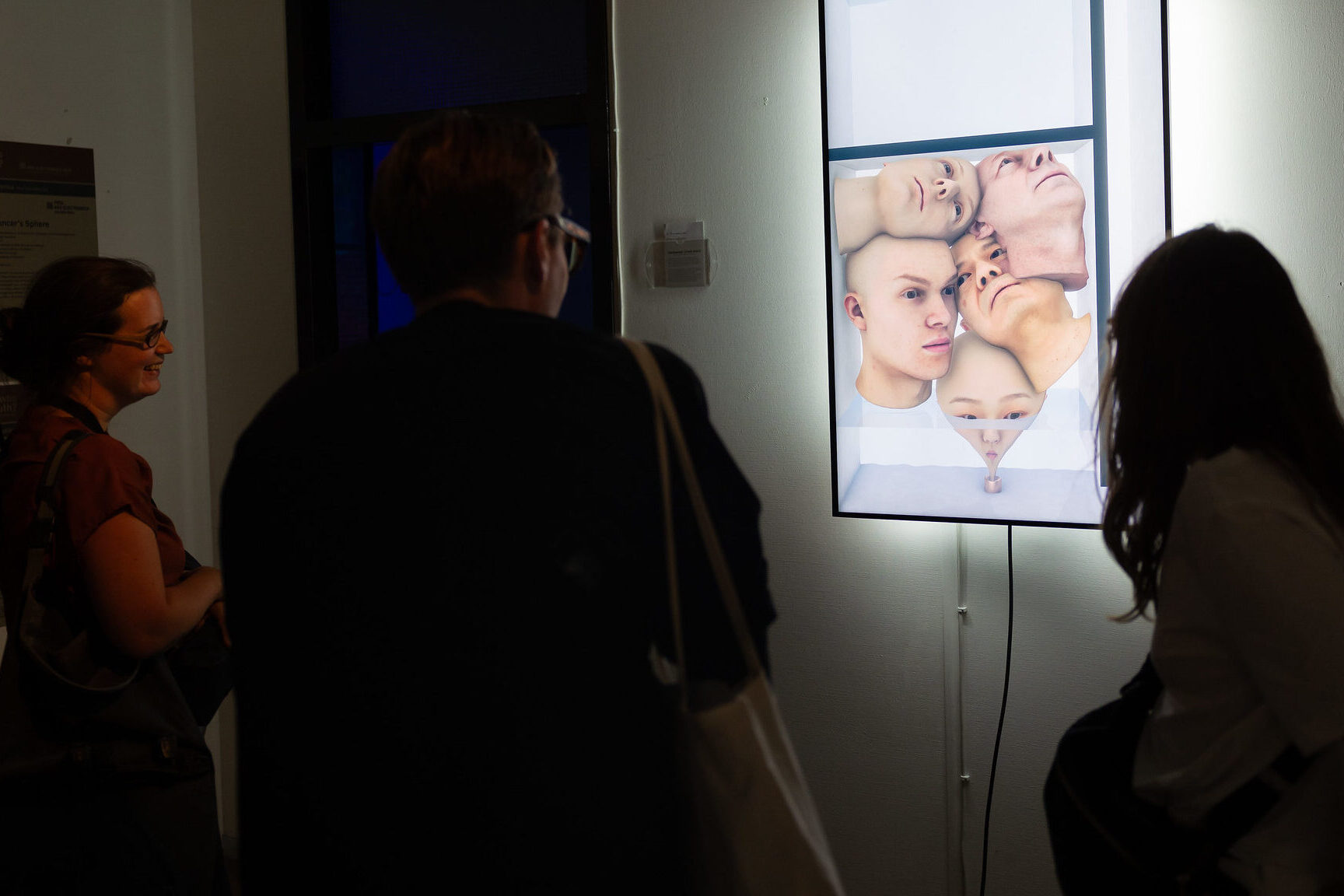Eunji Kwon has been selected as the second curator in residence for the Curatorial Residency Program enabled by ARKO. In this guest post, she reflects on the Prix Ars Electronica jury weekend from her personal perspective.
Guest post by Eunji Kwon
Hope is a present story that changes the future. Prix Ars Electronica Jury Meetings, viewed from a distance, was not a firm sanctuary for technology or art like it is now. AI, Sound Art, NFTs, Interactive Art, Bio Art, and other works at the intersection of particle science and art reflect where we are now and what kind of ‘Future’ we can create beyond the boundaries of the ‘Present’. And Prix Ars Electronica stands here now, cheering on their first step as they cross the border. We always become a borderline or guard against something new. Since nothing can be an arbitrary standard, and anything can be an absolute standard at the same time, we must always be on the borderline and be wary of falling into inertia. For a long time, both art and technology have found their intersection within their respective boundaries, but due to their constant development we are witnessing new boundaries everyday. Then what ‘Hope’ do we hope to find from New Animation Art, Interactive Art +, S+T+ARTS Prize, S+T+ARTS Prize Africa, u19 – create your world, and European Union Prize for Citizen Science?

Stay Alert / Differences and conflicts : Essentials for Expanding Boundaries
Hope has played a transformative role in shaping the Anthropocene era, turning the tide and changing the paradigm. These changes apply not only to technology but also to art. Faith in a ray of hope, rather than just following the past century, turns the impossible into possible and increases the completeness of our lives. And in order to access this kind of hope, we will have to cross boundaries and come into conflict with each other. Questions like “What is appropriate for this era?” or “What should we say now?” are essential yet too general. Still there are many boundaries and conflicts within those. These conflicts serve as a tool to shape the shape of hope, not to cut out differences or create a single, virtuous solution. Hope isn’t just an abstract value; it shifts along with our society and conflicts, reflecting our changing world.
At the end of last April, judges from different fields selected a total of 15 outstanding works over a period of three days including some Golden Nicas. The works that participated in Prix Ars Electronica are our stories that resonate at the same time and considered what it should look like, who should come together, and what hopes should be talked about. To respect these concerns, repeated discussions and evaluations were continued in meetings which were provided in the best environment by the Prix Ars Electronica team. Judges invited from various fields of society, including technology and art, considered and analyzed all works from various angles, going beyond the conventional standards of their field of expertise, and in this process, conditions such as race, gender, and nationality were also considered along with the subjects of technology and art. Real hope in our lives begins with sincere approach that goes beyond old customs. These countless stories that took place over a few days are meant to ensure that our hopes do not remain illusions.

The Bottom of Pandora’s Box: Hope
Perhaps the last bit of hope left in Pandora’s box is what keeps us going in life. But how can we find the real hope that can be practically applied to our lives rather than vain hope? This treasure in the midst of chaos such as conflict between humans, changes in nature, and changes in the relationship between humans and technology is not absolute and is not a magic that creates something from nothing. The perfect value we should pursue may not exist. Depending on what kind of hope we pursue, it will change fluidly, and we will look at hope from a new perspective. Perhaps this is a natural phenomenon that occurs along with changes in technology and art. As with our hope, perhaps what we are looking for at the intersection of art and technology is not something absolute that magically appears and presents us with a noble vision, but rather emerging artistic change based on countless data and technological research. Therefore, we must step out from comfort zone and actively face hope. This year, Prix Ars Electronica would like to introduce you to the ‘Hope’ that will turn your world upside down. We will be able to see how the hope in our Pandora’s box will continue to change from the intersection of art and technology. Where do you stand, what are you wary of, and what do you hope? In our continuing story, we will become each other’s boundaries, and our guard against will become a path to hope.

Eunji Kwon
Eunji Kwon is a researcher and curator who explores the art historical perspectives and humanistic implications of digital art. She obtained her bachelor’s degree in art history from Paris 4th University and her master’s degree in art history from Paris 10th University. Since then, she has participated in numerous exhibitions in Korea, including those at the Daejeon Museum of Art, the Seoul Foundation’s Unfold X 2023, and the National Museum of Modern and Contemporary Art. Her recent research interest lies in
BioArt, where she examines trends within and outside of Korea in this art genre. She also explores the ethical dimensions between art and technology, as well as the establishment of its art historical significance.
